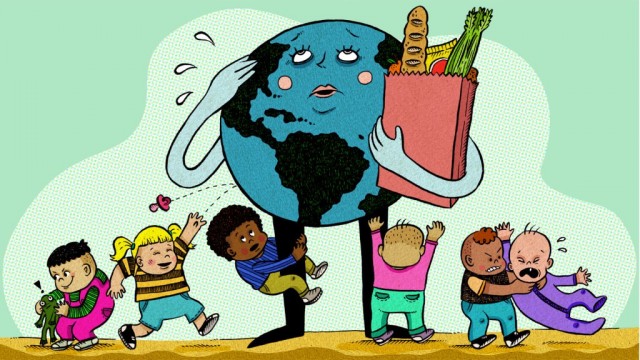 If the world goes on with business as usual, there’s not going to be enough food to feed everyone by 2050. A lot of things would have to change.
If the world goes on with business as usual, there’s not going to be enough food to feed everyone by 2050. A lot of things would have to change.
And a lot of things should change! Currently, the daily effort to satisfy the collective appetite of humanity is causing deforestation, erosion, extinction, and massive release of greenhouse gases. In changing how it feeds itself, humankind can drive down poverty, sequester greenhouse gas, conserve wild environments, and put organic matter back into the soil. All of that is plausibly within reach.
Let’s start with population. If we can’t get a handle on our swelling numbers, everything else is moot. So what would make human population level off, or even fall? There are always political measures — like China’s one-child policy — but laws like that are hard to pass and even harder to enforce. They restrict freedom while producing terrible unintended consequences — like families getting rid of girls.
There’s another option that actually works better: Improve the lives of poor women and children.
“If you want parents to make the choice to reduce their number of offspring, there’s no better way than making sure those offspring survive,” said Joel Cohen, author of the magisterial book How Many People Can the Earth Support? “There’s no example of decline in fertility that has not been preceded by a decline in child mortality that I know of.”

This is counterintuitive. But there is abundant evidence of this pattern all over the world, regardless of religion. Where children die and women are repressed, population booms. Where children thrive, and women are empowered, population growth stops.
As sustainable agriculture expert Gordon Conway writes in his book, One Billion Hungry: Can We Feed the World?:
A popular misconception is that providing the developing countries with more food will serve to increase populations; in other words, it is a self-defeating policy. The more food women have, the more children they will have and the greater will be their children’s survival, leading to population growth, so goes the argument. However, the experience of the demographic transition described above suggests the opposite. As people become more prosperous, which includes being better fed and having lower child mortality, the fewer children women want. Providing they then have access to family planning methods, the fertility rates will drop and the population will cease to grow.
To control our impact on the environment, we have to stop growing. A measure of freedom and security for women and children is a precondition to ending population growth. The key factor connecting child mortality and lack of women’s rights is poverty. Therefore, environmental efforts have to be, first and foremost, campaigns for social justice.
Click here for the full story




